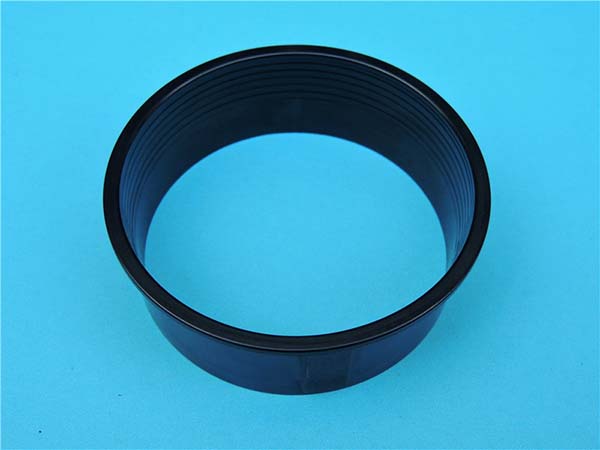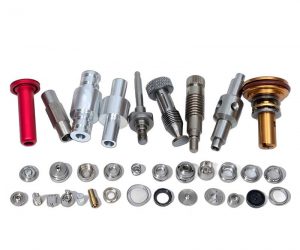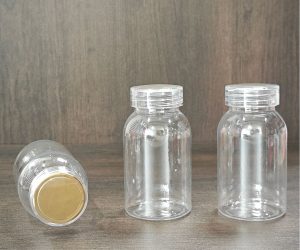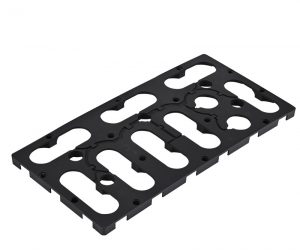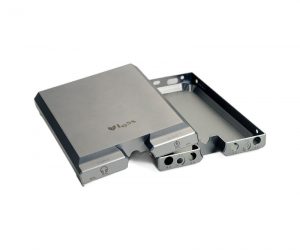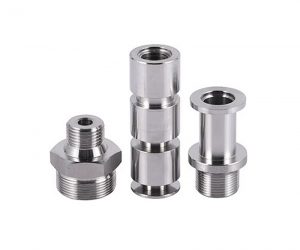Understanding the Basics of 3D Printing for Space Marine Helmets
3D printing, also known as additive manufacturing, has revolutionized the way we create objects, and it has found a particularly exciting application in the creation of space marine helmets. But how does this technology work, and why is it so well - suited for making these helmets?
The Principle of 3D Printing
At its core, 3D printing builds objects layer by layer from a digital model. First, a 3D model of the space marine helmet is created using computer - aided design (CAD) software. This digital model serves as the blueprint for the physical helmet. Then, the 3D printer reads the model and deposits materials in thin layers, one on top of the other, until the entire helmet is formed. For example, in fused deposition modeling (FDM), which is a common 3D - printing method, a thermoplastic filament is melted and extruded through a nozzle to create each layer.
Why 3D Printing for Space Marine Helmets?
- Customization: Space marine helmets often need to fit different head sizes and shapes. With 3D printing, it's easy to customize the helmet's interior to ensure a snug and comfortable fit for the wearer. Traditional manufacturing methods would require expensive molds for each variation, but 3D printing can produce unique designs without the need for new molds.
- Complex Geometries: Space marine helmets usually have intricate designs, such as vents, ridges, and decorative elements. 3D printing can easily replicate these complex geometries that would be extremely difficult or even impossible to achieve with traditional manufacturing techniques like injection molding. For instance, internal cooling channels within the helmet can be designed and printed in a single piece, optimizing the helmet's functionality.
- Cost - effectiveness for Small Batches: If you only need to produce a small number of space marine helmets, 3D printing can be much more cost - effective. There are no high - upfront tooling costs as in traditional manufacturing, making it an ideal choice for hobbyists, cosplayers, or small - scale production runs.
- Material Options: A wide range of materials can be used in 3D printing for space marine helmets. Plastics like PLA (polylactic acid), ABS (acrylonitrile butadiene styrene), and PETG (polyethylene terephthalate glycol - modified) are popular choices due to their strength, durability, and ease of printing. Some advanced 3D printers can even use composite materials to enhance the helmet's properties, such as adding carbon fiber for increased strength - to - weight ratio.
Materials Used in 3D Printing Space Marine Helmets
The choice of material is crucial when 3D printing a space marine helmet. Different materials offer distinct properties, each with its own set of advantages and disadvantages. Here are some commonly used materials:
PLA (Polylactic Acid)
- Properties: PLA is a biodegradable thermoplastic made from renewable resources like corn starch or sugarcane. It has a relatively low melting point, which makes it easy to print with most FDM 3D printers. It comes in a wide range of colors, allowing for a high - degree of customization in terms of appearance.
- Advantages: It is easy to print, has a smooth surface finish right out of the printer, and is environmentally friendly. PLA is also relatively inexpensive compared to some other 3D - printing materials, making it a great choice for hobbyists and those on a budget. For example, a 1kg spool of PLA filament can cost as low as \(15 - \)20 in many online stores.
- Disadvantages: PLA is not as heat - resistant as some other plastics. It can start to warp or deform at temperatures above 60 - 70°C (140 - 158°F). It also has relatively low impact resistance, which might be a concern if the space marine helmet needs to withstand rough handling.
ABS (Acrylonitrile Butadiene Styrene)
- Properties: ABS is a strong and durable thermoplastic. It has good impact resistance and can withstand higher temperatures than PLA, with a heat - deflection temperature of around 90 - 105°C (194 - 221°F). ABS is also known for its ability to bond well with itself, which can be useful for post - processing techniques like sanding and painting.
- Advantages: Its strength and heat - resistance make it suitable for creating more functional and durable space marine helmets. ABS can be used to print parts that need to endure more stress, such as thick - walled helmets or those with complex mechanical features.
- Disadvantages: ABS is more difficult to print than PLA. It requires a heated print bed (usually around 80 - 110°C or 176 - 230°F) to prevent warping, and it also gives off a strong odor during printing due to the release of styrene gas. Additionally, ABS is not biodegradable, which is a drawback from an environmental perspective.
PETG (Polyethylene Terephthalate Glycol - modified)
- Properties: PETG combines the best of both worlds in many ways. It has good strength and impact resistance, similar to ABS, but it is also more heat - resistant than PLA. PETG is semi - crystalline, which gives it a nice balance between flexibility and rigidity. It is also highly resistant to chemicals and moisture.
- Advantages: PETG is easier to print than ABS. It can be printed on a heated bed, but at a lower temperature, usually around 60 - 80°C (140 - 176°F). It has excellent layer adhesion, resulting in strong prints. PETG is also more UV - resistant than PLA, which is beneficial if the space marine helmet will be on display or used outdoors.
- Disadvantages: While it has many positive properties, PETG is often more expensive than PLA. A 1kg spool of PETG filament may cost \(20 - \)30, which can be a deterrent for those looking for a budget - friendly option.
The following table summarizes the key differences between these materials:
| Material | Heat - Resistance | Impact Resistance | Ease of Printing | Biodegradability | Cost (approx. per 1kg spool) |
| PLA | Low (60 - 70°C) | Low | High | Yes | \(15 - \)20 |
| ABS | High (90 - 105°C) | High | Low | No | \(18 - \)25 |
| PETG | Medium - High (above 70°C) | High | Medium | No | \(20 - \)30 |
The Process of 3D Printing a Space Marine Helmet
3D printing a space marine helmet is a multi - step process that requires precision and attention to detail. Here's a step - by - step guide from the initial design to the final product.
Step 1: Design and Modeling
- Concept Sketch: First, start with a concept sketch of the space marine helmet. This can be a rough drawing on paper, where you define the overall shape, size, and any unique features such as vents, horns, or visor designs. For example, if you want a helmet with a menacing look, you might sketch large, angular vents and a pointed visor.
- 3D Modeling in CAD Software: Transfer the sketch into a 3D modeling software like Blender, Autodesk Fusion 360, or Tinkercad. In the software, create a 3D model by using various tools such as extrusion, boolean operations, and surface modeling. You can adjust the dimensions to fit different head sizes. For instance, if you plan to print the helmet for cosplay, you can measure your own head circumference and use that data to customize the interior size of the helmet model.
Step 2: Slicing the Model
- Selecting a Slicing Software: Once the 3D model is complete, you need to use slicing software such as Cura, Simplify3D, or PrusaSlicer. These programs take the 3D model and slice it into thin horizontal layers.
- Setting Slicing Parameters: Adjust parameters like layer height, infill density, and print speed. A lower layer height (e.g., 0.1 - 0.2mm) will result in a smoother surface finish but a longer print time. An infill density of 20 - 30% is often sufficient for a space marine helmet, providing a good balance between strength and material usage. For example, if you want a more lightweight helmet, you can reduce the infill density slightly, but be cautious as it may affect the structural integrity.
Step 3: Printing
- Preparing the 3D Printer: Make sure your 3D printer is properly calibrated. Check the nozzle for clogs, level the print bed, and load the appropriate filament. If you're using PLA, the nozzle temperature might be set around 200 - 210°C, while for ABS, it could be 230 - 250°C.
- Starting the Print: Send the sliced file to the 3D printer. The printer will start depositing layers of filament according to the sliced model. The printing process can take several hours to a full day, depending on the size of the helmet, the layer height, and the print speed. For example, a medium - sized space marine helmet might take 10 - 15 hours to print.
Step 4: Post - Processing
- Removing Supports: If supports were used during printing (which are often necessary for overhanging parts of the helmet), carefully remove them. You can use tools like pliers or a hobby knife. Be gentle to avoid damaging the main structure of the helmet.
- Sanding: Sand the surface of the helmet to smooth out any rough areas or layer lines. Start with a coarse - grit sandpaper (e.g., 80 - 120 grit) and gradually move to a finer grit (200 - 400 grit) for a smoother finish.
- Painting and Finishing: Prime the helmet with a suitable primer to help the paint adhere better. Then, you can paint the helmet with acrylic paints to achieve the desired color and look. You can add decals or use airbrushing techniques for more detailed designs, such as adding battle scars or a faction logo to make the space marine helmet look more realistic.
Yigu Technology's Viewpoint
As a non - standard plastic metal products custom Supplier, Yigu Technology believes that 3D printing for space marine helmets opens up new horizons. Our expertise in materials allows us to offer a wide range of options tailored to different requirements. For instance, we can provide high - strength composite materials that combine the advantages of plastics and metals, enhancing the helmet's durability and functionality.
In terms of customization, our advanced manufacturing processes enable us to meet the most intricate design demands. Whether it's a unique shape or a specific internal structure, we can translate the digital model into a high - quality physical product. We foresee a bright future for 3D - printed space marine helmets, especially in niche markets such as high - end cosplay and small - scale collectible production, and are committed to contributing our technical strengths to this innovative field.
